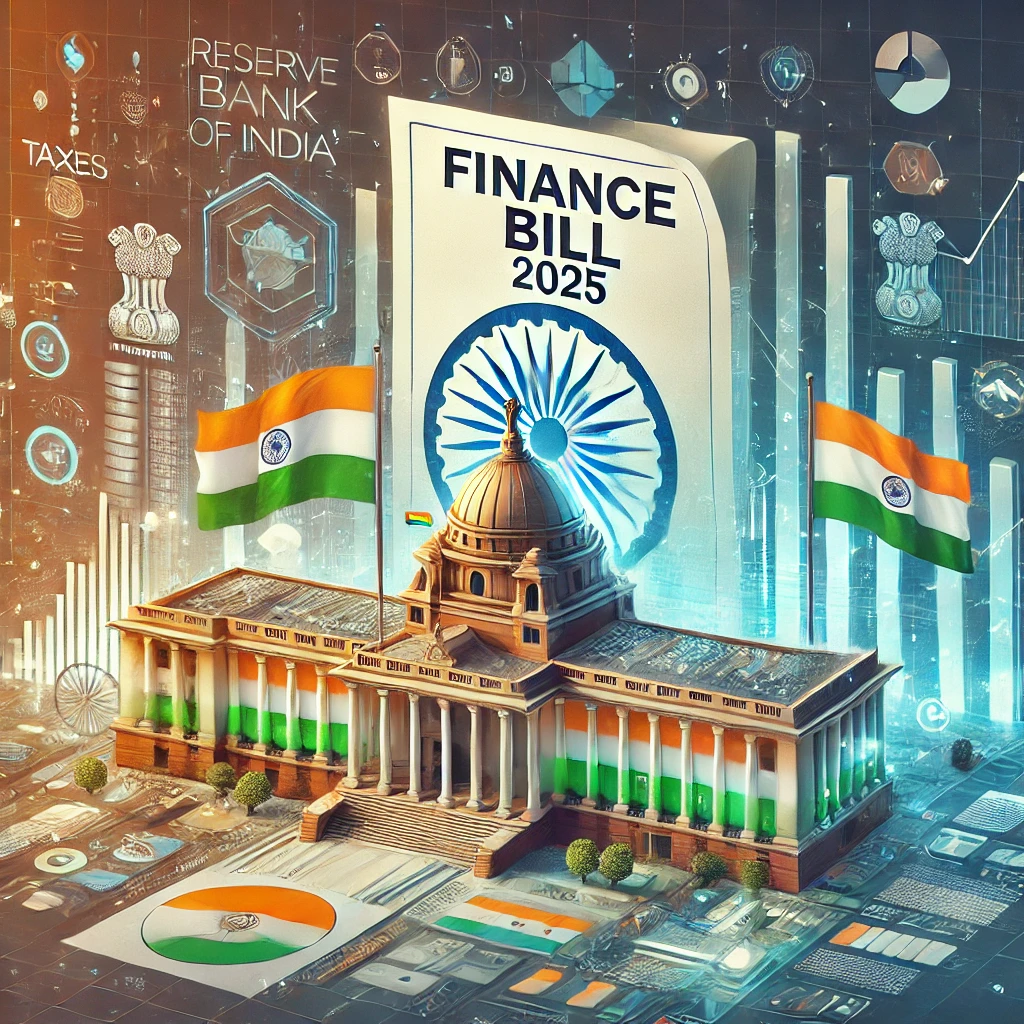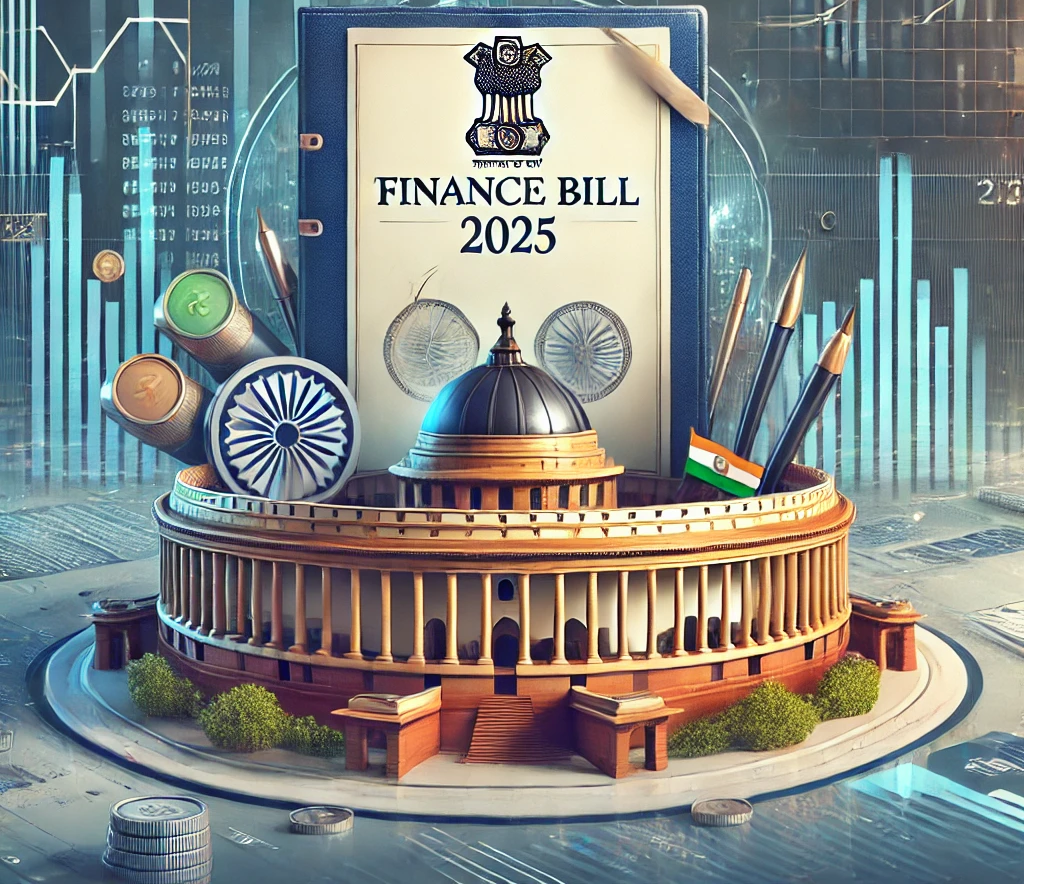
Finance Bill 2025, Amendments in Income Tax Act, 1961
2025-02-24Tax Rate for Assessment Year 2026-27 and Financial Year 2025-26.
Individuals
New Regime (Revised Slabs)
Income up to 4,00,000 – No tax
4,00,001 – 8,00,000 – 5%
8,00,001 – 12,00,000 – 10%
12,00,001 – 16,00,000 – 15%
16,00,001 – 20,00,000 – 20%
20,00,001 – 24,00,000 – 25%
Above 24,00,000 – 30%
Old Regime
Income up to 2,50,000 – No tax
2,50,001 – 5,00,000 – 5%
5,00,001 – 10,00,000 – 20%
Above 10,00,000 – 30%
In old regime, there are no changes.
Business Entities
Partnership Firm – 30% on all income
Domestic Companies
Turnover < 400 crore in FY 2023-24: 25%
Other Domestic Companies: 30%
Foreign Companies: 35%
No Income tax Payable for Income up to Rs.12 Lakhs in FY 2025-26.
Comment: Maximum financial impact on all individuals has been made in the Budget 2025, promoting them to apply for the new scheme.
The Income tax payable for income up to Rs. 12 Lakhs under the new regime will be nil, considering the standard deduction on salary it will be Rs 12 lakhs plus 75,000 i.e. Rs.12,75,000.
However, this benefit of reduced tax rates and rebates is given only in the new tax regime and not for the old tax Regime.
Marginal Relief concept
Question: "Will earning more than 12 lakh be a gift or a curse for me?"
No, Marginal Relief Provision under the new tax regime is available, but only to resident individuals.
This provision ensures taxpayers don't pay excessive taxes on income marginally above 12 lakhs.
According to the Income-tax provisions, a marginal relief will be provided to certain taxpayers up to the amount of the difference between the excess tax payable (including surcharge) on the income above Rs.12 lakhs and the amount of income that exceeds Rs.12 Lakhs.
See this table below:
| Income* (Rs.) |
Tax ignoring Marginal relief (Rs.) |
Actual tax payable with marginal relief (Rs.) |
| 12,10,000 | 61,500 | 10,000 |
| 12,50,000 | 67,500 | 50,000 |
| 12,70,000 | 70,500 | 70,000 |
| 12,75,000 | 71,250 | 71,250 |
*Assuming above Income after standard deduction.
"Research data provided by CA Aman Rajput & CA Ajay Kumar".
87A Rebate for Special rate income
A new proviso has been added. It is now explicitly stated that the 87A rebate applies only to income taxed at normal rates and not at special rates.
The Bombay High Court ruling in the case of the Chamber of Tax Consultants through its President Mr. Vijay Bha Vs Director General of Income Tax (systems) (Bombay High Court) Public Interest Litigation (L) No. 32465 of 2024 has been overruled.
The rebate cannot exceed the tax calculated under the new tax regime (Sec on 115BAC) rates.
Example: If the tax payable under Sec on 115BAC(1A) is Rs 50,000 (due to lower taxable income or deductions), then the rebate under Section 87A will be limited to ₹50,000, not Rs 60,000.
| Particulars | New Rules (2026 Onwards) |
| Taxable Income | 11,50,000 |
| Tax as per 115BAC(1A) | 50,000 |
| Maximum Rebate Allowed | 50,000 (Not 60,000) |
| Final Tax Payable | 0 |
New Income tax bill to be introduced
The Hon’ble Finance Minister has indicated that a new Income Tax Bill Will be introduced in the parliament by the second week of February 2025.
The existing Income Tax Act, 1961 will undergo considerable simplification and probably be replaced by the new act in the upcoming days.
Revision in MSME Classification Criteria
In the Budget Speech, the Hon’ble Finance Minister has stated as follows, “The investment and turnover limits for a classification of all MSMEs will be enhanced to 2.5 and 2 mes respectively”.
The existing criteria for MSME Classification and the revised classification are as follows:
| Type | Current Invest (Crore) |
Current Sales (Crore) |
New Invest (Crore) |
New Sales (Crore) |
| Micro | 1 | 5 | 2.5 | 10 |
| Small | 10 | 50 | 25 | 100 |
| Medium | 50 | 250 | 125 | 500 |
However, Now most of the creditors may fall under Micro and Small Category and the payments should be made by them within 15 days to claim the same expense as per Sec on 43B(h) of the Income tax Act,1961.
On the other hand, it will give MSME confidence to grow and create jobs for youth.
"Special thanks to CA Aman Rajput & CA Ajay Kumar".
TDS Related Changes
The threshold limits for various types of Incomes have been modified for the financial year 2025-26.
No higher rate of TDS for non-filing of return by others.
The most troublesome section 206AB was introduced with effect from 01st July 2021 to state that when a person deducts TDS for a deductee and the deductee has not filed an Income tax return for the last two years and the total of tax collected and tax deducted is more than Rs.50,000 in those years.
Then the TDS is deducted as follows
The higher of the below rates:
5% of the amount
2X the rate mentioned in the provision The current applicable rate
This was logically flawed as it imposed a burden on the deductor for no flaw or lapse on their part.
This section mandating higher TDS deduction for non-compliance on the part of others is now removed. However, a higher rate of TDS in case the deductee has not linked to his PAN and Aadhar is still applicable.
TCS Related Changes
Reduction in TCS rate for Timbers
The rate of TCS for Timbers at present is 2.5%.
For the financial year 2025-26, the Rate of TCS will be 2%.
TCS on sale of Goods under sec on 206C(1H) is scrapped
The TCS charged under sec on 206C(1H) was introduced with effect from 01st October 2020.
This section had made it mandatory for:
Sellers whose turnover in the previous financial year exceeds Rs.10 crores.
To collect tax at 0.1% on the amount received as consideration for sales.
Once the sale consideration exceeds Rs.50 Lakhs in a financial year.
This section is scrapped with effect from 31st March 2025. For the Financial year 2025-26, the sellers need not collect tax at source on sales under sec on 206C(1H).
Comment/Reason: There is a similar TDS section under 194Q that required buyers to deduct Tax at source at the rate of 0.1%, hence it created confusion amongst taxpayers.
Increase in TCS Threshold for LRS Remittances: Rs 7 Lakh to Rs 10 Lakh
Current Scenario
Under Sec on 206C(1G) of the Income Tax Act, remittances made under the Liberalized Remittance Scheme are subject to Tax Collected at Source.
The existing threshold for TCS applicability is Rs 7 lakh per financial year per individual.
If total remittances exceed 7 lakh, the applicable TCS rates are:
0.5% – If the remittance is for education and financed through an education loan.
5% – For education and medical purposes without a loan.
20% – For other purposes like investments, gifts, and foreign travel (recently reduced from 20% to 5% for
certain transactions).
Proposed Change (Effective from FY 2025-26)
The TCS threshold for LRS remittances is increased from Rs 7 lakh to Rs 10 lakh per financial year.
TCS is removed if the remittance is for education and finance through an education loan
This means that no TCS will be applicable on remittances up to Rs 10 lakh.
The Updated Returns
From 01st April 2022, the government gave an option to file Updated returns. The updated return can be filed only with payment of additional tax and for up to 2 years from the end of an assessment year.
The provisions for filing an Updated return are amended by providing an extra two years as follows
| Delay | Old Additional Tax | New Additional Tax |
| Upto 12 months | 25% | 25% |
| 12 to 24 Months | 50% | 50% |
| 24 to 36 Months | Cannot be filed | 60% |
| 36 to 48 Months | Cannot be filed | 70% |
So, for the financial year 2025-26, a Belated return can be filed on the 31st of December 2026 and an updated return along with Additional tax can be Filed on the 31st March 2030.
Restriction on Filing if tax authorities are investigating:
If the Income Tax Department has issued a show-cause notice under
Section 148A (before reassessing escaped income), then the taxpayer cannot file an updated return after 36 months from the end of the relevant assessment year.
Exception to the Restriction:
If, after investigation, the tax officer determines (under Section 148A(3)) that there is no valid reason to reassess the taxpayer, then the restriction does not apply, and an updated return can still be filed.
"Special thanks to CA Aman Rajput & CA Ajay Kumar".
Withdrawals from the National Savings Scheme (NSS) for individuals
The proposal to provide tax exemption on withdrawals from the National Savings Scheme (NSS) for individuals on or after 29th August 2024 is a significant relief for taxpayers.
Comment/Here is a detailed explanation of its implications:
Current Tax Treatment of National Savings Scheme (NSS) Withdrawals
Taxability: Under the existing provisions, withdrawals from NSS are generally taxable under the head "Income from Other Sources" unless specific exemptions apply.
TDS Deduction: Certain withdrawals may attract Tax Deducted at Source (TDS) if they exceed prescribed thresholds.
No EEE Status: Unlike PPF or EPF, NSS does not currently enjoy the Exempt-Exempt-Exempt (EEE) status.
Proposed Change (Effective from 29th August 2024)
Withdrawals made on or after 29th August 2024 will be exempt from tax for individuals.
This means that the withdrawn amount will not be considered taxable income and will not attract any TDS or additional tax liability.
The move aims to enhance liquidity for investors and promote savings.
Taxpayers Can Claim "Nil Annual Value" for two self-occupied properties without any condition
Current Tax Treatment
Under Section 23(2) of the Income Tax Act, if a taxpayer owns more than one self-occupied property, only one property can be treated as self-occupied with "Nil Annual Value".
The second self-occupied property is deemed to be let out, and the taxpayer must declare a notional rent (market rent), which is then taxed as Income from House Property after applicable deductions.
Proposed Change (Effective from AY 2026-27)
Taxpayers will now be allowed to claim "Nil Annual Value" for up to two self-occupied properties.
This means no deemed rental income will be charged on the second self-occupied house.
No conditions will be imposed, such as proving family dependency or maintaining separate residences for employment.
Illustration of Tax Savings
Before the Proposal
If a taxpayer owns two self-occupied houses, the second one is deemed let out, and no onal rent (say ₹3 lakh annually) is added to taxable income.
After claiming 30% standard deduction, the taxable notional income is ₹2.1 lakh, which attracts tax based on slab rates.
After the Proposal
Both properties will have Nil Annual Value, meaning no deemed rental income is added to taxable income.
This results in tax savings ranging from ₹10,000 to ₹63,000, depending on the taxpayer's slab rate (5% to 30%).
Extension of Registration Period for Small Charitable Trusts & Institutions from 5 Years to 10 Years
Current Scenario (Before the Proposal)
Under Section 12AB of the Income Tax Act, charitable trusts and institutions seeking tax exemption must renew their registration every 5 years.
This involves submitting detailed documentation, compliance with regulatory conditions, and scrutiny by tax authorities.
Frequent renewal increases the administrative and compliance burden, especially for small charitable organizations with limited resources.
Proposed Change
The registration period for small charitable trusts and institutions will be extended from 5 years to 10 years.
This means that once registered, an eligible trust will not need to reapply for renewal for a decade.
Here small charitable trust means, trusts whose total income, without giving effect to the provisions of sections 11 and 12, does not exceed rupees five crores during each of the two previous years.
Special provision for computing profits and gains of non-residents engaged in the business of providing services or technology for setting up an electronics manufacturing facility or in connection with manufacturing or producing electronic goods, article, or things in India.
Section 44BBD introduces a presumptive taxation scheme for non-residents providing services or technology to eligible Indians.
electronics manufacturers, deeming 25% of specified receipts as taxable business income.
This applies only to companies under a government-notified scheme meeting prescribed conditions.
Taxable on an amount basis as it includes all payments received or receivable by the non-resident for providing services or technology in India.
No set-off allowed in case non-residents op ng for this scheme cannot claim set-off for unabsorbed depreciation or carried-forward business losses.
"Special thanks to CA Aman Rajput & CA Ajay Kumar".
 Chartered Accountants
Chartered Accountants

